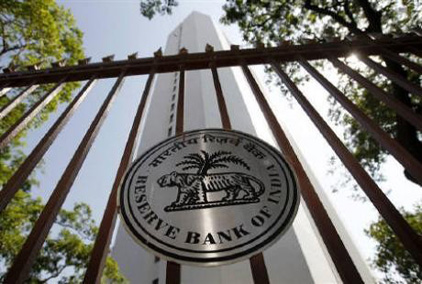December 24, 2025 09:52 pm (IST)

RBI indicates risks to inflation on the upside
Mumbai, Jun 7 (IBNS): During the second bi-monthly monetary policy review on Tuesday, the Reserve Bank of India (RBI) indicated that the risks to inflation were on the upside, according to media reports.
RBI Governor, Dr Raghuram Rajan, said that the ebbing of inflation pressures for two consecutive months to March, after a period of steady rise, was interrupted once again in April. Retail inflation measured by the consumer price index (CPI) rose more sharply than expected due to a more-than-seasonal jump in food prices.
The RBI retained the key interest rate or the repo rate -- the rate at which the RBI lends money to commercial banks -- under the liquidity adjustment facility (LAF) -- at 6.5 per cent.
It was in April, during the first monetary policy review for the fiscal year, RBI had reduced the rate to 6.5 per cent.
On Tuesday, the RBI said that it will keep the cash reserve ratio (CRR) of scheduled banks -- the amount of cash that banks have to retain as part of their total deposits -- unchanged at 4.0 per cent of net demand and time liabilities (NDTL) and continue to provide liquidity as required but progressively lower the average ex-ante liquidity deficit in the system from one per cent of NDTL to a position closer to neutrality.
Consequently, the reverse repo rate -- the rate at which the RBI borrows from banks by lending securities -- under the LAF -- will remain unchanged at 6.0 per cent, and the marginal standing facility (MSF) rate and the Bank Rate at 7.0 per cent.
Talking about the policy stance, Rajan said, "The inflation surprise in the April reading makes the future trajectory of inflation somewhat more uncertain. The expectations of a normal monsoon and a reasonable spatial and temporal distribution of rainfall, along with various supply management measures and the introduction of the electronic national agriculture market (e-NAM) trading portal, should moderate unanticipated flares of food inflation."
In addition, according to the policy review, capacity utilisation indicators suggest that the available headroom in industry could keep output prices subdued even as demand picks up. Nonetheless, there are upside risks – firming international commodity prices, particularly of crude oil; the implementation of the 7th Central Pay Commission awards which will have to be factored into projections as soon as clarity on implementation emerges; the upturn in inflation expectations of households and of corporates; and the stickiness in inflation excluding food and fuel.
Taking these factors into account, the RBI said that the inflation projections given in the April policy statement are retained, though with an upside bias.
In its bi-monthly monetary policy statement of April 2016, the Reserve Bank stated that it would watch macroeconomic and financial developments in the months ahead with a view to responding as space opens up. Incoming data since then show a sharper-than-anticipated upsurge in inflationary pressures emanating from a number of food items (beyond seasonal effects), as well as a reversal in commodity prices.
A strong monsoon, continued astute food management, as well as steady expansion in supply capacity, especially in services, could help offset these upward pressures, the RBI said.
Given the uncertainties, the Reserve Bank will stay on hold, said the policy report, but the stance of monetary policy remains accommodative.
The RBI will monitor macroeconomic and financial developments for any further scope for policy action.
Support Our Journalism
We cannot do without you.. your contribution supports unbiased journalism
IBNS is not driven by any ism- not wokeism, not racism, not skewed secularism, not hyper right-wing or left liberal ideals, nor by any hardline religious beliefs or hyper nationalism. We want to serve you good old objective news, as they are. We do not judge or preach. We let people decide for themselves. We only try to present factual and well-sourced news.
Support objective journalism for a small contribution.
Latest Headlines
Bharti–Warburg storm Haier India! Sunil Mittal bets big as China’s Haier dilutes stake
Wed, Dec 24 2025
India clears new airlines to break aviation duopoly after IndiGo crisis exposes market risks
Wed, Dec 24 2025
Gold rally sparks surge in Manappuram, Muthoot & IIFL shares – investors celebrate!
Wed, Dec 24 2025
Coal India hits 3% gain after board approves subsidiary listings – investors rejoice!
Wed, Dec 24 2025
Sensex slips over 100 points at open — here’s what experts say next
Tue, Dec 23 2025







